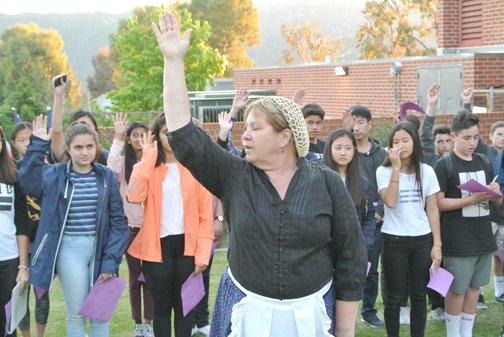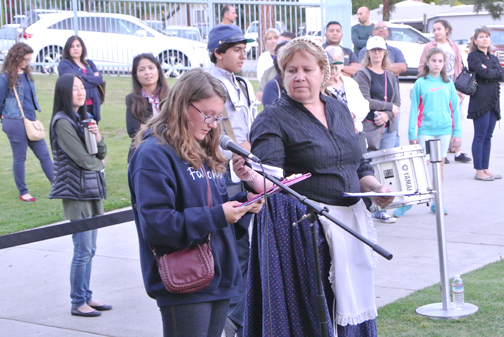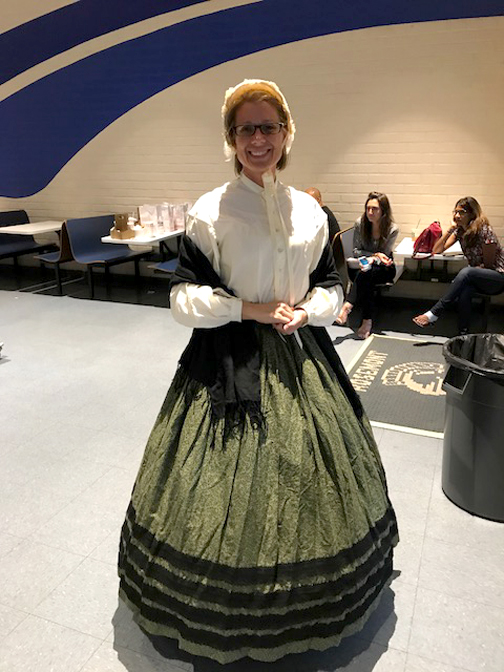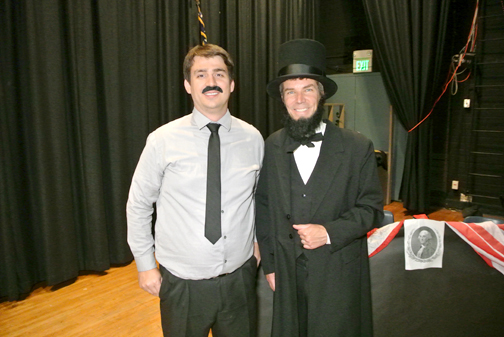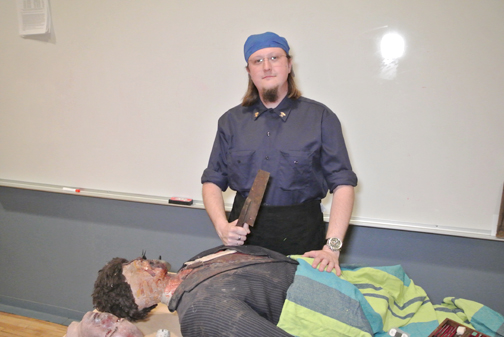
Charly Shelton portrayed a Civil War doctor.
By Mary O’KEEFE
In the spring of 1861, the United States began a war that tore the country apart. For four years the United States Civil War pitted family against family, neighbor against neighbor and in the end took the lives of an estimated 620,000 soldiers.
This “war between the states” occurred over 150 years ago, and there is no one still alive to talk about what they experienced, so it becomes a page or two in the history books. But at Rosemont Middle School last Thursday night the sound of a fife and drum corps could be heard, women wore hoop skirts, men were in gray and blue uniforms and bean soup and hardtack were on the menu as the history of this devastating war was brought to life.
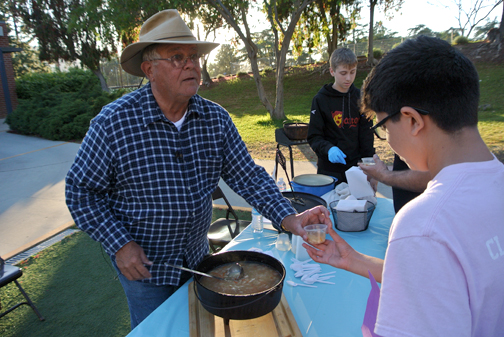
Rosemont eighth graders traveled from station to station to learn about the war and those who served in the military, their challenges and their life after battle.
There was a demonstration at the front of the school grounds on how to march, something the soldiers had to do for miles carrying needed items in a “haversack,” a shoulder bag.
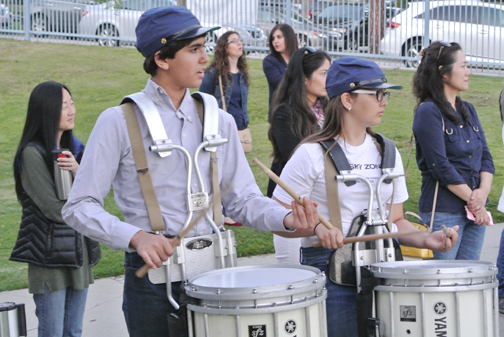
There was then a Union soldier, Chase Adams, with a Civil War musket. He spoke about the soldier’s life and how important it was to keep his gun in working order. He demonstrated, with the help of some students, how Civil War soldiers would line up to take their shots, some kneeling in front while others staggered in a line behind them. At the end of the demonstration he loaded the gun, pulled the trigger and … nothing.
“Misfire,” Adams said. “This would generally happen a lot of times in warfare even when it was raining. To solve that was the creation of the percussion caps because, unlike the flintlocks, percussion caps were able to handle the rain because [with flintlocks] the powder would get wet.”
He then reminded the audience that it would be loud; then he aimed and fired. As promised, the bang was loud, then followed by a puff of smoke.
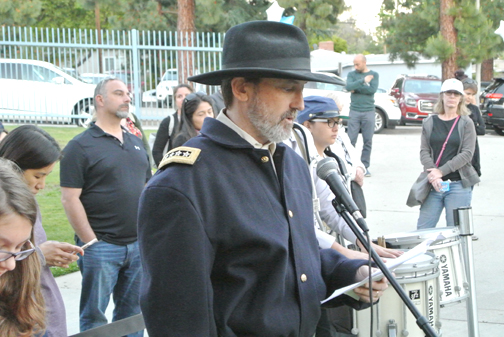
In the school’s auditorium were President Abraham Lincoln (teacher Mike Anker) and John Wilkes Booth (teacher Ian Tyler). They re-enacted the night of April 14, 1865 when Booth, who was a well-known actor and Confederate sympathizer, fatally shot President Lincoln while he was watching the play “Our American Cousin” at the Ford’s Theatre in Washington, D.C.
Another area held a field doctor (Charly Shelton). He shared the medical practices of the time, speaking of the training, or lack thereof, of surgeons and doctors during the Civil War. As the wounded were brought in, doctors did not have a lot of time to spend on each, so many times amputation was the fastest way to take care of an injured person who had been shot.
Surgeons, Shelton said, were in short supply during the Civil War.
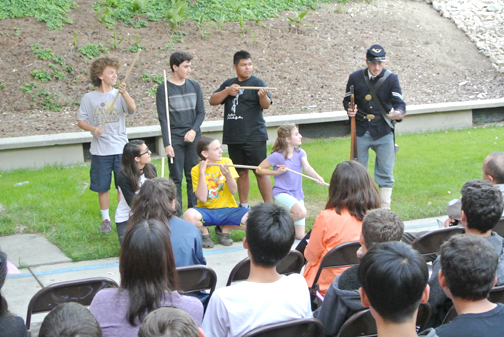
“There was about one surgeon for every thousand soldiers,” Shelton said. “Doctors became more precious than the bullets.”
He explained there was no reconstruction surgery, either. He took a saw and demonstrated how an arm was amputated, to the squeal of some in the audience.
The last demonstration found a familiar face at Rosemont – Ron Sowers, former assistant principal. He demonstrated how soldiers would cook while on the march. He had three different types of cast iron pots, one that would be called a Dutch oven today. The cooking was done a lot in camps because carrying a cast iron skillet was too heavy for the soldiers’ packs.
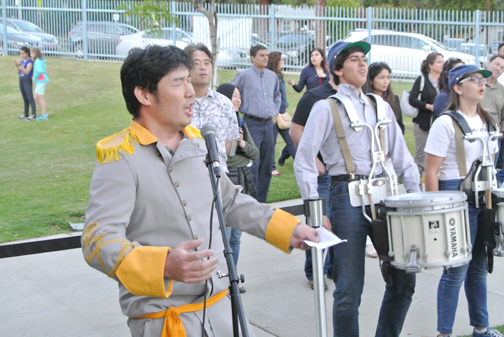
Sowers did talk about one of the smaller pots that could have been used.
“This is one I had when I was a Boy Scout, 55 years ago,” he said.
Sowers had made bean soup, which he shared with students and their parents. He also shared “hardtack,” a type of cracker that tasted as if a cracker was mixed with a rock. Hardtack was a staple for Civil War soldiers because it did not spoil quickly, although it was, and is, very hard.
“Soldiers would use the butt of their rifles to break it into pieces,” Sowers said.
Hardtack did not sound like something anyone would like to eat but Civil War soldiers – and Rosemont students – stood in line to try it.
Each area of learning was allotted a specific amount time and the notice to move to next station was when the Fife and Drum Corps. – Rod Yonkers’ music department students – began to play.
